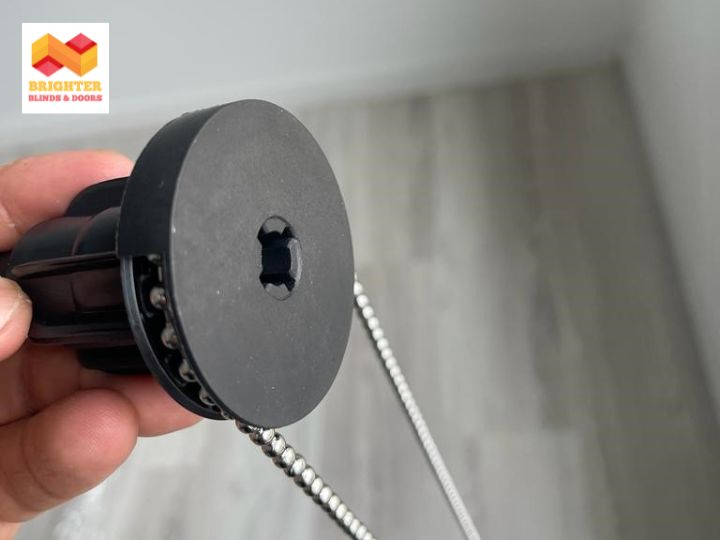Spring-loaded roller blinds are popular window coverings due to their elegant design and ease of usage. They can become trapped, not roll smoothly, or lose spring tension. This article details how to identify and fix spring-loaded roller blind difficulties.
Tools and Materials Needed
Before starting the repair, gather the following tools and materials:
- Flathead screwdriver
- Phillips screwdriver
- Pliers
- Lubricant (silicone spray or graphite powder)
- Clean cloth
- Replacement parts (if necessary)
- Tape measure
Diagnosing Common Issues
Roller Blind Won’t Roll Up or Down
If your spring-loaded roller blind won’t roll up or down, the spring mechanism might be jammed or have lost tension.
Roller Blind is Crooked
If the blind hangs crookedly, it might be due to an uneven installation or issues with the mounting brackets.
Roller Blind is Stuck
A stuck roller blind may be caused by debris in the mechanism or misalignment of the internal components.
Step-by-Step Guide to Fixing Spring-Loaded Roller Blinds
Step 1: Remove the Roller Blind
Roller blinds should be removed carefully from mounting brackets. Lifting most spring-loaded roller blinds from brackets is easy. Support the blind to avoid fabric or mechanism damage.
Step 2: Inspect the Spring Mechanism
Remove the blind and check the spring. Check for visible damage or impediments. Check for loose or broken pieces and that the spring is properly positioned in its housing.
Step 3: Clean the Mechanism
Remove dust and debris from the spring mechanism with a clean cloth. The mechanism can cling due to dirt and filth. Clean interior components with a tiny brush if needed.
Step 4: Lubricate the Mechanism
Lubricate the spring mechanism’s working parts lightly. Silicone spray and graphite powder work well for this. Avoid oil-based lubricants, which gather dirt and stick the mechanism again.
Step 5: Re-Tension the Spring
If the spring mechanism is loose, retension it. So how:
- Completely Unroll Blind: Unroll the blind to see the entire cloth.
- Take Off the End Cap: Carefully remove the blind’s spring mechanism end cap with a flathead screwdriver.
- Wind the Spring: Remove the end cap and grab the spring mechanism’s flat pin or cog with pliers. Turn the pin or cog to tighten the spring. This usually goes clockwise. Turn the spring 3–5 times.
- After winding the spring, carefully roll the blind up and down to verify tension. The spring may need more revolutions if it doesn’t roll smoothly.
- Reattach the End Cap: Install the end cap securely after retensioning the spring.
Step 6: Reinstall the Roller Blind
Return the roller blind to its brackets carefully. Align the blind and secure the brackets. Make sure the blind slides up and down smoothly.
Step 7: Adjust the Mounting Brackets
Adjust the mounting brackets if the blind hangs crookedly. Use a tape measure to place brackets at the same height on both sides. To hang the blind evenly, adjust the brackets.
Step 8: Final Adjustments
When the blind is back in place, adjust the tension and alignment as needed. Maintain smooth blind operation and even hanging.
Preventive Maintenance
Regular Cleaning
Clean your spring-loaded roller blinds and components regularly to avoid future troubles. As dust and debris gather, the mechanism can stick. Keep the blind and spring mechanism clean by wiping them down regularly.
Proper Use
Keep the roller blind properly employed and the fabric away from excessive force. Pulling the blind too hard can ruin the spring mechanism. Pull the blind gently to raise and lower.
Timely Repairs
Fix roller blind faults immediately to avoid further damage. Repair any wear or malfunction before it worsens. Roller blinds can last longer and work better with timely repairs.
Also read: Roller Blind Clutch Mechanism Stuck: How to Fix it
Advanced Troubleshooting
Disassemble the Spring Mechanism
Disassembling the spring mechanism for a more thorough check may be necessary if basic troubleshooting fails. Carefully remove mechanism screws using a screwdriver. Remember how the parts are assembled to reassemble them correctly.
Inspect Internal Components
Disassemble the mechanism and check internal components for damage or wear. Breakage or bent pieces might cause the mechanism to stick. Damaged parts must be replaced. Manufacturers or specialist suppliers may sell replacement parts.
Reassemble the Spring Mechanism
Reassemble the spring mechanism after inspecting and replacing broken parts. Make sure the mechanism works and all parts are aligned. Screw the roller blind spring mechanism back on.
Test the Roller Blind
Install the roller blind brackets and test the mechanism again. Pull the blind up and down to test the mechanism. If the spring still doesn’t work, you may require professional help or a new roller blind.
Conclusion
Following these instructions can make fixing a spring-loaded roller blind easy. You may fix your roller blind by checking, cleaning, lubricating, and retensioning the spring mechanism. Maintaining and using your roller blind properly can help it last for years. Consider professional help or blind replacement if difficulties persist when the mechanism is significantly damaged.




